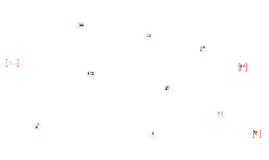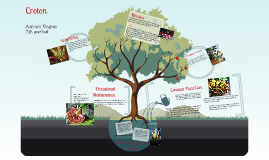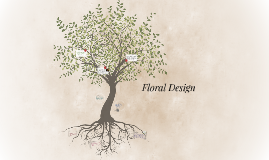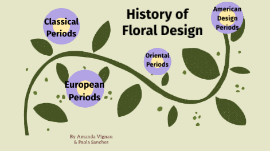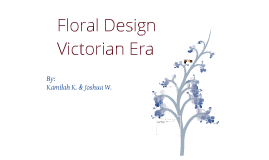Floral Design
Transcript: History of Floral Design in Egyptian Period (2800 BC TO 28 B.C.) The use of flowers was traditional like flowers used for temple offerings and banquet table decorations, and at times for garlands, and wreaths for guests. Characteristics of Egyptian design were clarity ordered simplicity, using repetition of a particular pattern. Numerous types of containers were used to hold flowers. History Of Floral Design The evolutionary history of flowers extends across some 125 years. Scientists say there are over 270,000 species of flowers that have been documented and are existing in the 21st Century. During this time, an intricate assortment of more than 125,000 species has developed. But scientists have yet to answer basic questions about these marvels of beauty... What led to their amazing diversity? Are there flowers that have not changed much during the evolution of this planet? The first plant fossils found were woody magnolia-like plants dating back 93 million years. Paleobotanists have more recently uncovered tiny herb-like flower fossils dating back 120 million years. Flowering plants, called angiosperms by scientists, were believed to be already diverse and found in most locations by the middle of the Cretaceous Period. ... 146 million years ago. A myriad of images of preserved flowers and flower parts have been found in fossils located in Sweden, Portugal, England, and along the Eastern and Gulf coasts of the United States. Below are a few flowers which have a long history. Alstroemeria, Aster, Calendula, Carnation, Chrysanthemums, Daisy, Dahlia, Delphinium, Gladiolus, Holly, Lily, Rose, Orchid, Poinsettia, Queen Anne's Lace, Snapdragons, Sunflower, Tulip, Violet. As we know them today, flower arrangements represent an amalgamation of two styles: the European and the New World style - Oriental style. The European style arrangements from which we borrowed were filled with large numbers of flowers rich in various colors, and are referred to as 'Mass Arrangements'. In contrast, the Oriental styles emphasized simplicity, containing few flowers and conservative colors, and, as they emphasized lines instead of masses, are known as 'Line Arrangements'. The knowledge of how our ancestors used flowers comes to us by glancing at the following floral designs of the respective periods. History of Floral Design in Egyptian Period (2800 BC TO 28 B.C.) The use of flowers was traditional like flowers used for temple offerings and banquet table decorations, and at times for garlands, and wreaths for guests. Lotus, Acacia, roses, water lilies, violets, Madonna lilies, narcissus, jasmine, poppies, and especially the sacred lotus blossom were among the flowers used. Characteristics of Egyptian design were clarity ordered simplicity, using repetition of a particular pattern. Numerous types of containers were used to hold flowers. Use of fruit and foliage also was popular. Characteristics of Egyptian design were clarity ordered simplicity, using repetition of a particular pattern. A typical design consisted of a single flower with a single bud or leaf on either side, repeated as a unit. History of Floral Design in Greek Period (600-150 B.C.) The ancient Greeks used flowers more for adornment. Herbs were frequently used with the flowers, and as garlands, and wreaths. flowers were often just strewn on the ground. They introduced the Horn of Plenty or Cornucopia. Most arrangements were triangular and symmetrical. Roses, hyacinths, lilies, iris, narcissus, violets, as well as grape leaves, herbs, and seed pods were used. Most arrangements ere triangular and symmetrical, usually of one or a limited number of colors. White as common, since it as a sign of purity. History of Floral Design in Roman Period (28 -B.C.-325 A. D.) The Romans continued with the customs of the Greeks. Garlands, wreaths and crowns were more elaborate than those of the Greeks. Crowns and garlands were tapered. Flowers were sometimes arranged in baskets and cornucopias. The Romans continued with the customs of the Greeks. Use as made of the fragrance of flowers. History of Floral Design in Byzantine Period (320-600 A.D.) This period saw a continuance of the Greek and Roman styles, but fruit was used with the flowers in garlands in a twisted effect. Stylized trees in containers were made symmetrically with foliage and flowers in large baskets, goblets, or low containers. These were highly stylized, and used neighboring hues, such as green, blue-green, blue, and violet, with complementary accents of red, red-orange, orange, and yellow. History of Floral Design in Medieval Period, The Middle Ages (476-1400 A.D.) Little is known of the floral art of this period, but whatever information there is has been gathered from the Persian paintings, rugs and tapestries of the fourteenth century. Oriental influence is clear. Numerous types of containers were used. Flowers were used for religious functions. History of Floral Design in Rennaissance Period (1400-1600 A.D.) The







